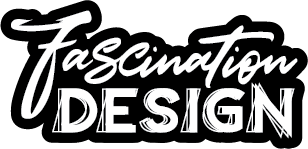I’m writing this because I haven’t been following WordPress development closely for the last 3 years (hello 2020 pandemic & aftermath.) There is so much content out there for the classic templates & theme builders like Elementor, Divi, Beaver Builder etc. that it’s REALLY hard to get a grip on the new direction that WordPress is headed especially since it’s still in the midst of development.
I initially couldn’t even find a good CLEAR & simple breakdown of the terminology I needed to know so writing this was partially in order for me to process and better understand what I was consuming and pull out some key things. My own Quickstart guide if you will but for the folks who have been using WordPress for over a decade.
Keep in mind that this is still evolving and the date I’m writing this is June 20, 2023. WordPress is currently 6.2.2. Things will likely change again for WordPress 6.3 which will likely be August 2023 based on the linked video & WordPress roadmap.
WordPress Editor
Gutenberg is the block editor for pages and posts. It is apparently no longer exclusive to WordPress and is also available for Drupal.
This link has the visual breakdown & screenshots: https://developer.wordpress.org/block-editor/
And this is the deeper dive: https://developer.wordpress.org/block-editor/explanations/faq/
But why is there a Gutenberg Plugin if it’s now built into WordPress?
The Gutenberg plugin is now early access to what’s coming to block and full site editing. Current version of the plugin is 16.0.0. Do not use this if you aren’t ok with beta testing.
WordPress Theme
Full site editor (FSE) is another name for WordPress block themes in WordPress. “Full Site Editing” is sometimes used as a verb.
Handy chart for Classic Theme vs Block Theme if you’re transitioning: https://developer.wordpress.org/themes/block-themes/#differences-and-similarities-between-classic-themes-and-block-themes
And crash course if you’re switching from a Classic Theme to Block Theme: https://learn.wordpress.org/tutorial/how-to-switch-from-a-classic-to-a-block-theme/
Good screen shot breakdowns of the full site editor (FSE) from Oct 17, 2022: https://www.smashingmagazine.com/2022/10/wordpress-full-site-editing/
I highly recommend just diving in on a sandboxed / staging environment or demo site using Automattic’s blockbase so you familiarize yourself using a theme created as WordPress / Automattic intended:
And/or one of Automattic’s Blockbase child themes:
Linked them because they are harder to search for.
When do I need to create my own child themes?
(if I’m not building a theme from scratch)
An excellent short summary from https://fullsiteediting.com/lessons/child-themes/
“If you change theme.json, HTML, CSS, PHP, or JavaScript files directly, you still need to create a child theme because these files are not protected when you install a theme update. There are also settings and styles in theme.json that you can not remove through the global styles interface. In this case, you also want to create a child theme and add your custom theme.json.”
But really when might I change these files? This video is about theme creation HOWEVER it’s the shortest video I found that helped me understand how themes are now being built:
Reusable Blocks, Block Patterns, Templates and Template Parts & Synced Patterns:
Except this appears to be in flux & currently changing:
Query loop blocks!
https://www.elegantthemes.com/blog/wordpress/wordpress-query-loop-block
What if I want to create my own WordPress Block Theme that can be used with the Full Site Editor … OR learn more?
These are some of the best resources I came across (this is also about where it becomes overkill):
- https://www.pootlepress.com/2023/05/wordpress-block-themes-dont-make-this-beginners-mistake/ (this is actually the first thing I watched)
- https://developer.wordpress.org/news/2023/02/block-theme-resources-roundup/
- https://make.wordpress.org/core/2023/06/14/whats-new-in-gutenberg-16-0-14-june/
- https://www.elegantthemes.com/blog/wordpress/create-block-theme
- https://richtabor.com/standardizing-theme-json-colors/
- https://learn.wordpress.org/
- https://wordpress.github.io/gutenberg/?path=/story/docs-introduction–page
- Get involved with WordPress: https://make.wordpress.org/
- https://learn.wordpress.org/tutorial/streamline-your-block-theme-development-with-create-block-theme/
And now for something completely different: Gutenberg block editor for Drupal
https://drupalgutenberg.org/ • https://www.drupal.org/project/gutenberg


